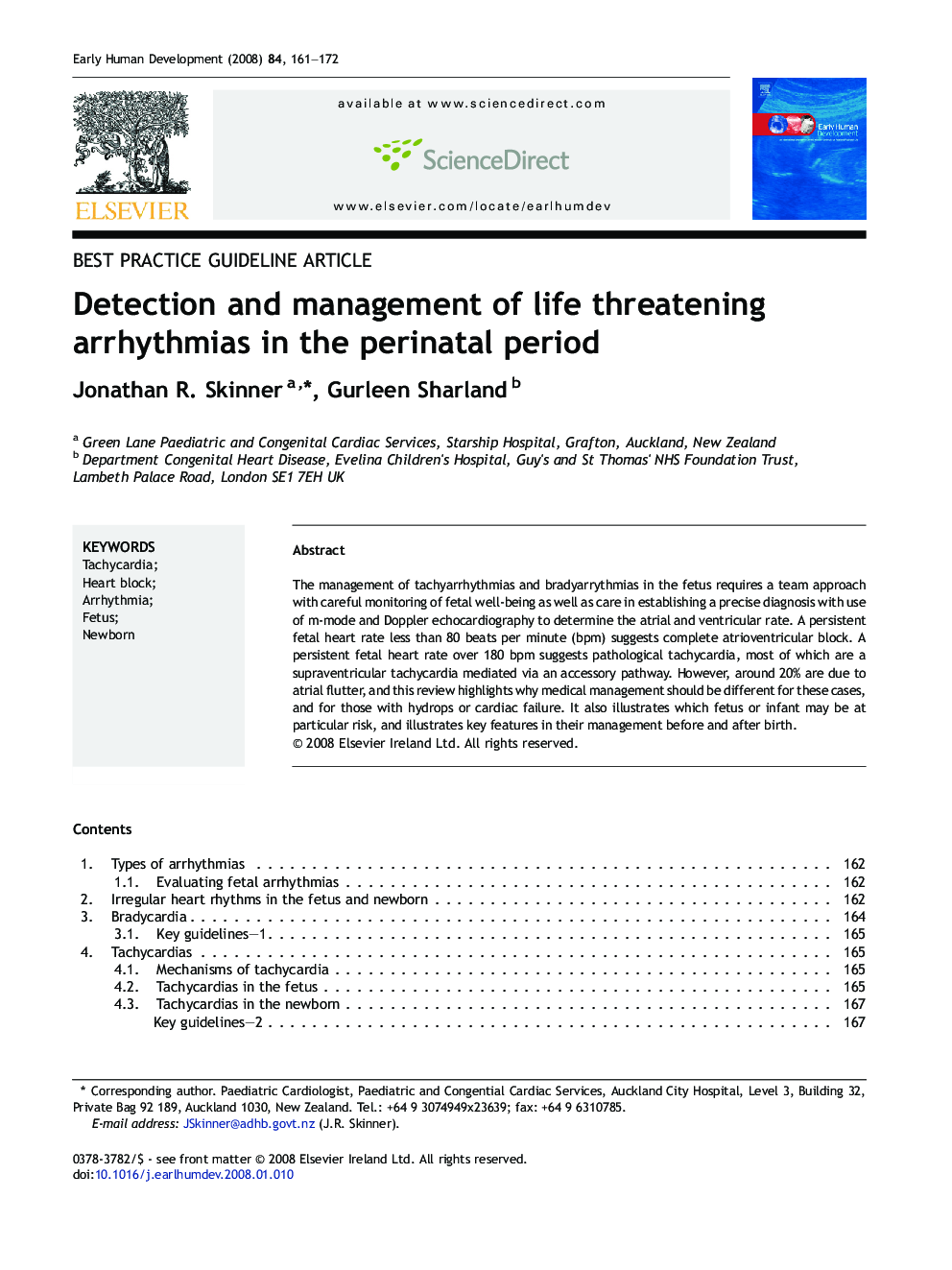| Article ID | Journal | Published Year | Pages | File Type |
|---|---|---|---|---|
| 3917215 | Early Human Development | 2008 | 12 Pages |
The management of tachyarrhythmias and bradyarrythmias in the fetus requires a team approach with careful monitoring of fetal well-being as well as care in establishing a precise diagnosis with use of m-mode and Doppler echocardiography to determine the atrial and ventricular rate. A persistent fetal heart rate less than 80 beats per minute (bpm) suggests complete atrioventricular block. A persistent fetal heart rate over 180 bpm suggests pathological tachycardia, most of which are a supraventricular tachycardia mediated via an accessory pathway. However, around 20% are due to atrial flutter, and this review highlights why medical management should be different for these cases, and for those with hydrops or cardiac failure. It also illustrates which fetus or infant may be at particular risk, and illustrates key features in their management before and after birth.
